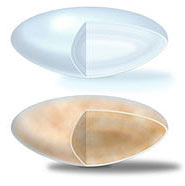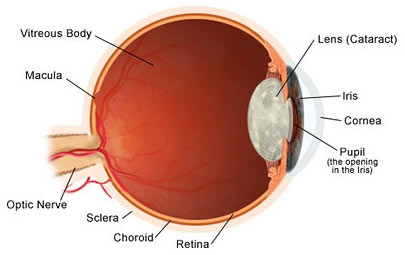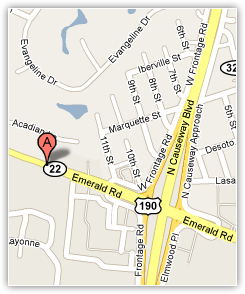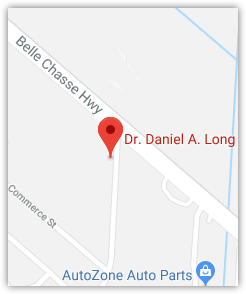The First in Louisiana
Our brand new, state of the art cataract surgery suite is the first of its kind in the State of Louisiana. Caplan Eye Clinic brings this new VIP experience to all of our cataract surgery patients.
Our Office Based Cataract Surgery Suite is equipped with newest cataract surgery technology.
Office Based Cataract Surgery removes the hassle of having to visit an outpatient surgery center for cataract removal.
The benefits of in office surgery include:
- No IV anesthesia, no needles!
- No fasting required
- No need for medical clearance; no unnecessary visits to your Primary Care Physican.
- Same day post op, no need to come back the following day for post op care.
All surgeries will be performed at our convenient Metairie location. Caplan Eye Clinic provides a superior experience with a familiar environment and staff.
For more information on our Surgery Suite, please give us a call at 504-888-2600!
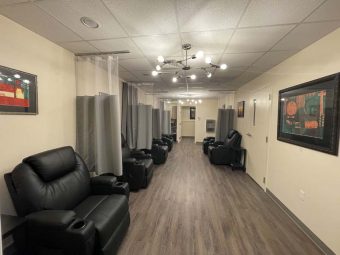
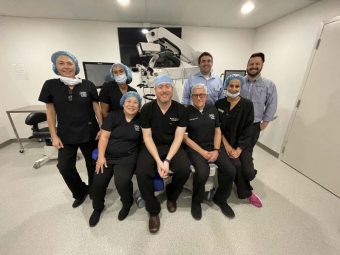


Dr. Brendon Sumich discusses Office Based Cataract Surgery.
What are Cataracts?
A cataract is a clouding of the lens inside the eye. The natural function of the lens is to help focus incoming light rays onto the retina in the back of the eye to give clear vision. In order to properly perform this function, the lens must be clear. Once the lens becomes cloudy, it is called a cataract.
What are the symptoms of Cataracts?
The symptoms of cataracts include vision that is blurred, cloudy, or dim. Colors may not appear as bright as the used to be and it may be difficult to see clearly in low or dim light. Depth perception may be affected and feel “off.” Daytime glare from the sun and nighttime glare from streetlights and headlights can be difficult to see through. Some patients also experience double vision within one eye.
Typically, symptoms from cataracts develop slowly over months to years. This slow development reflects the naturally slow-progression of cataracts as they grow inside of your eye. Many patients may have cataracts for years and not realize it until they visit an ophthalmologist because their symptoms have been progressing at a rate that is not noticeable on a day-to-day basis.
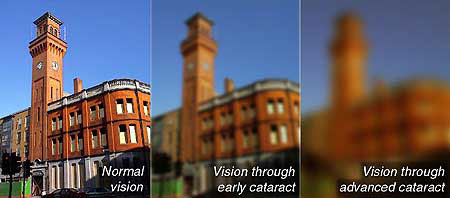
: Left image – clear vision. Middle Image – dim, colorless vision from an early cataract. Right Image – Blurry, colorless vision from an advanced cataract.
Who is at risk for developing Cataracts?
The number one risk factor for developing cataracts is age. Cataracts typically start forming in your eye around age 50, and 70% of patients around age 75 have cataracts. However, it is possible to develop a cataract at any age.
In addition to age, there are some other conditions associated with increased risk of cataract formation. They include:
- Diabetes
- Smoking
- Previous inflammation inside the eye
- Previous eye surgery
- Previous eye injury
- Long-term use of steroid medications, including oral steroids, steroid inhalers, and steroid eye drops.
How are Cataracts Diagnosed?
If you think you have cataracts or are at risk for developing cataracts, you should schedule an appointment with an ophthalmologist. Dr. Caplan or Dr. Sumich will perform a complete eye exam which includes checking your vision and dilating the pupils with eye drops. Through a dilated pupil and with a specialized microscope called a slit-lamp, he will be able to determine if you have a cataract or not.
How are Cataracts Treated?
Once Dr. Caplan or Dr. Sumich determines that you have a cataract, he will have a discussion with you regarding the significance of the cataract. Many cataracts are followed closely with repeat eye exams to determine if they are growing and to monitor their progress.
The only definitive treatment for cataracts is cataract surgery. Once a cataract starts to significantly affect your vision and quality of life, Dr Caplan and Dr. Sumich will discuss the cataract surgery procedure, preparation for and recovery after surgery, the benefits and possible complications of cataract surgery, and other information. Measurements of your eye will be taken to help him select what lens implant he will use during your surgery.
Cataract surgery is performed at our Office-Based Cataract Eye Surgery Suite. After your eye has been numbed using anesthesia eye drops, Dr. Sumich will make a small incision in the side of the eye and remove the cataract. The most common method to remove cataracts is called “phacoemulsification” where a small incision is made in the side of the eye and a small handheld device is used to simultaneously break up the cataract using ultrasound energy and vacuum the small pieces out of the eye. Once the cataract is completely removed, a clear intraocular lens implant is inserted into the eye to replace the cloudy cataract. After the surgery, Dr. Sumich will place a clear shield over the eye and you will spend a short period of time in the recovery area prior to discharge home. Shortly after your surgery, he will examine the eye and instruct you on the post-operative eye drops. Complete recovery can take up to one month, but most patients are seeing well within one week following surgery.
Modern cataract surgery has the advantage of being able to suit the many different visual needs of our patients. Prior to surgery, Dr. Caplan and Dr. Sumich will discuss with you your options regarding which type of intraocular lens implant to place into your eye to best meet your visual needs. To learn more about intraocular lens implants, please scroll down.
Multifocal Lens Implants – You may be able to Read & Drive Without Glasses!
Multifocal IOLs are intraocular lenses that are implanted in the eye during cataract surgery. They are designed to restore vision at all distances and decrease your need for bifocals or reading glasses after surgery.
Former New Orleans Saint Tom Dempsey
World Record Field Goal 63 Yards, November 8, 1970
“When it came time for me to look for cataract care, I called Caplan Eye Clinic. With their 70 plus years of outstanding results, I knew the Caplan Experience would be a winner for me. Now I have 20/20 vision!”
Our doctors used the new multifocal lens implants for Tom so that he can now read and drive without glasses.
As their name suggests, multifocal IOLs have more than one lens power. They work on the same principal as progressive eyeglass lenses and multifocal contact lenses — different zones in the lenses have different lens powers to improve vision at all distances.
Why Multifocal IOLs?
Most IOLs used in cataract surgery are spherical, monofocal lenses that only correct nearsightedness or farsightedness. Unless a monovision correction is attempted — where one eye is corrected for distance vision and the other is corrected for near vision — reading glasses usually are required after surgery.
The need for reading glasses after cataract surgery is due in part because most people who need cataract surgery are over age 40 and have lost the ability to focus up close because of presbyopia. But even when cataracts occur in a young person, the lens changes that cause cataracts also affect the focusing flexibility of the eye.
Any time the natural lens inside the eye (whether or not it is clouded by a cataract) is removed and replaced with a conventional IOL, the eye’s ability to shift focus is eliminated. If the eye is corrected for distance vision with a conventional monofocal IOL, reading glasses usually are needed.
Multifocal IOLs address this limitation of conventional monofocal lens implants. Multifocal lenses have several lens powers to restore vision at multiple distances and reduce or eliminate the need for corrective eyewear after surgery.
The Multifocal IOL Procedure
The surgical procedure for implanting a multifocal IOL is the same as a normal cataract procedure.
Generally, the steps involved in a modern phacoemulsification-style cataract surgery (the most widely used cataract surgery performed in the United States) are:
- Anesthetic gel or eye drops are applied to your eye to numb it. A gentle relaxing medicine may also be administered intravenously to make sure you are comfortable during the surgery. Dilating drops also are applied to give the surgeon access to the cloudy lens.
- Our doctors create a tiny “side port” incision in the cornea and a thick clear (“viscoelastic”) fluid is injected into the eye to maintain a safe amount of space between the cataract and the sensitive back surface of the cornea.
- A second small (approximately 3-millimeter) incision is made near the periphery of the cornea for the cataract removal.
- An instrument is inserted in the incision to create a circular opening in the thin sac (called the lens capsule) that holds the lens in place within the eye.
- The phacoemulsification probe is inserted and used to break up the cloudy lens with ultrasonic waves. The pieces of the lens are then removed from the eye with suction, leaving the clear posterior lens capsule intact.
- A soft tube containing the rolled-up flexible IOL is inserted into the eye, and the lens is gently ejected from the tube. The surgeon then adjusts the position of the IOL so it fits securely and properly where the natural lens used to be.
- The viscoelastic fluid is removed from the eye, along with any remaining bits of lens material.
In most cases, no stitches are needed to seal the surgical incision in this type of cataract surgery.
The entire procedure typically is done on an outpatient basis, and generally takes less than 20 minutes. Many patients see well almost immediately after surgery.
Multifocal IOL Cost
Multifocal IOLs cost more than traditional monofocal intraocular lenses. Medicare, supplemental insurance policies for people covered by Medicare, and private health or vision insurance typically will not cover the additional cost of these premium IOLs, compared to the cost of standard monofocal lenses used in cataract surgery.
If you choose to upgrade to a multifocal IOL as part of your cataract surgery, usually you will be required to pay the “out-of-pocket” difference in cost between the multifocal IOL and the allowance your insurance company provides for a conventional monofocal IOL.
Our Surgery Counselor will discuss with you all the fees and charges for your procedure, the coverage provided by your policy and any applicable out-of-pocket expenses.
You can lower your out-of-pocket costs to upgrade to multifocal IOLs by setting up a Health Savings Account (HSA) at your bank or contributing to a flexible health benefits program at work.
We also offer financing programs that allow you to pay over time at attractive interest rates or interest-free for a limited period of time.
ORA (Optiwave Refractive Analysis) Guided Cataract Surgery
 The ORA System™ is a new advancement in cataract surgery that assists the Dr. Sumich in making the best choices for intraocular lens implant power and astigmatism correction. ORA uses Wavefront technology to analyze the intricacies of your eye’s individual aspects to customize cataract surgery to your visual needs. It is performed during your surgery after the cataract has been removed from your eye and before the lens implant is placed in the eye.
The ORA System™ is a new advancement in cataract surgery that assists the Dr. Sumich in making the best choices for intraocular lens implant power and astigmatism correction. ORA uses Wavefront technology to analyze the intricacies of your eye’s individual aspects to customize cataract surgery to your visual needs. It is performed during your surgery after the cataract has been removed from your eye and before the lens implant is placed in the eye.
Benefits of ORA There are many important benefits to having the ORA System™ technology included as part of your vision correction procedure. These include:
- The ORA System™ may help your surgeon achieve better results and provide you an improved quality of vision.
- The ORA System™ gives your surgeon an added level of confirmation for an optimal outcome.
- If you have astigmatism, the ORA System™ may improve the accuracy of your correction to help reduce the chance you’ll need to wear eyeglasses after your procedure.
Dr. Caplan and Dr. Sumich recommend every patient receiving a lifestyle lens implant (multifocal or toric lens) or patients who have previously undergone refractive surgery (LASIK, PRK, RK) elect to add ORA to their cataract procedure.










